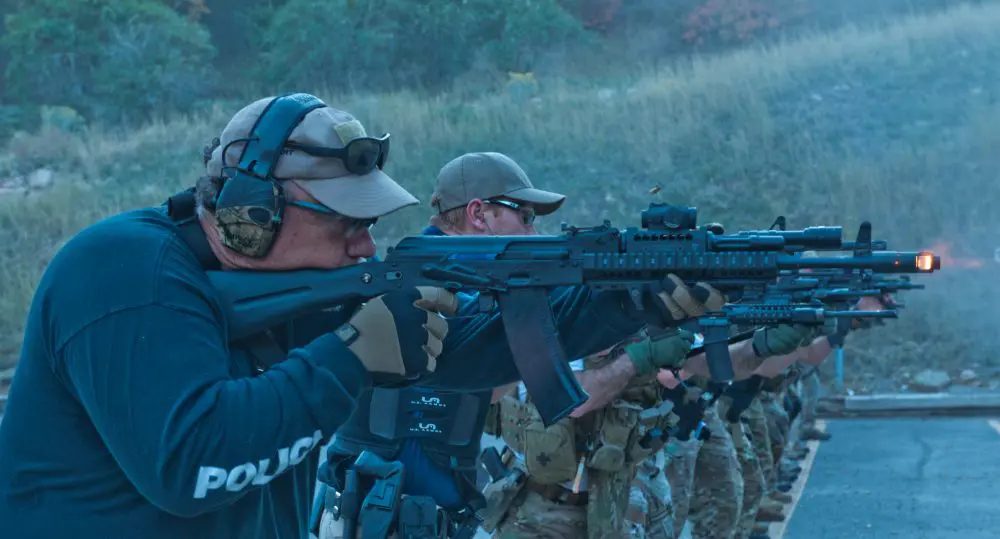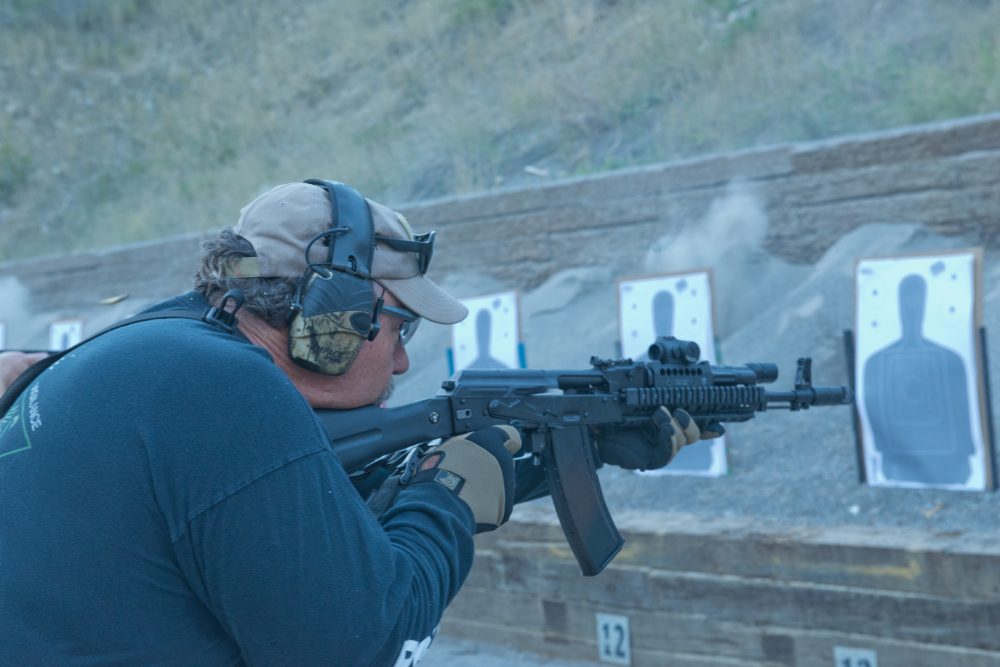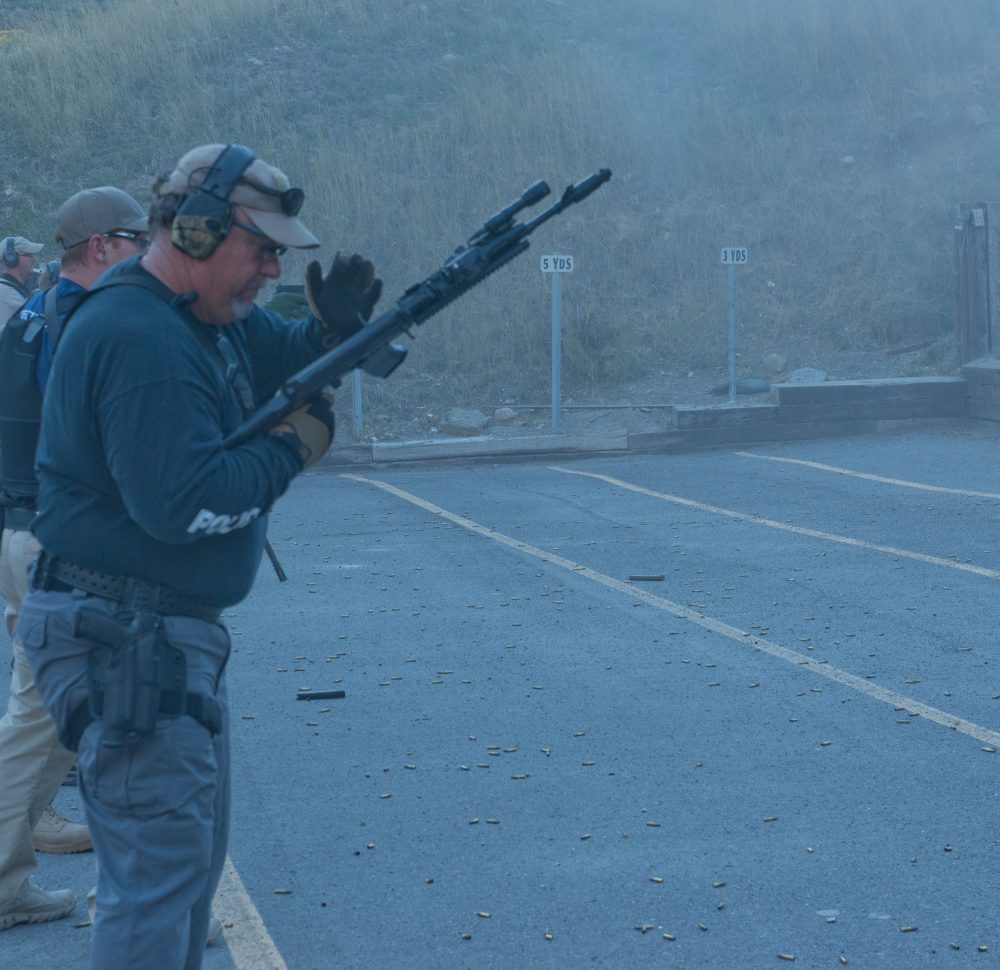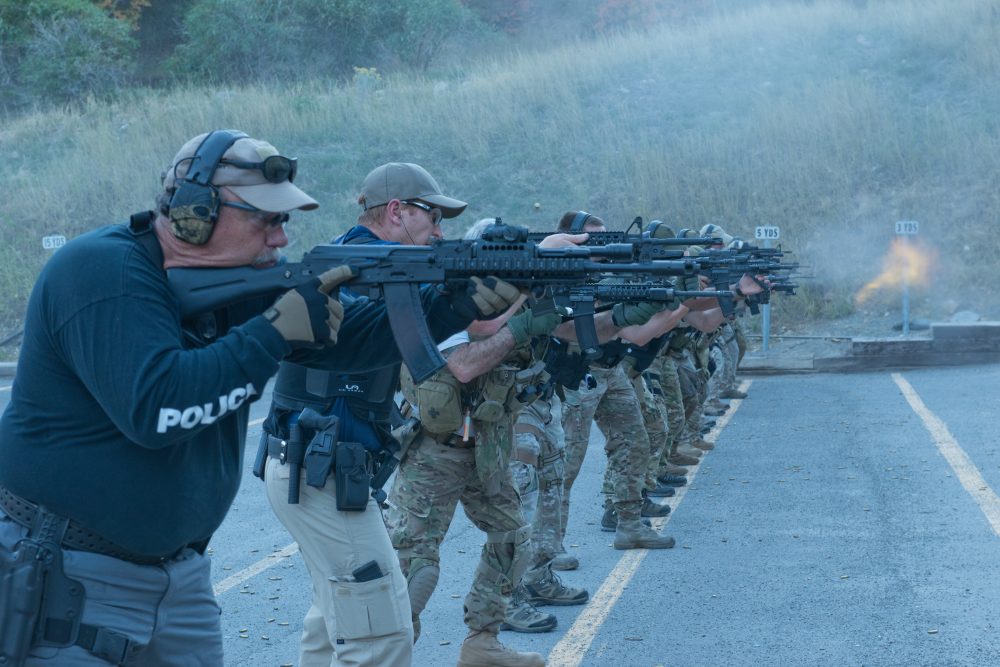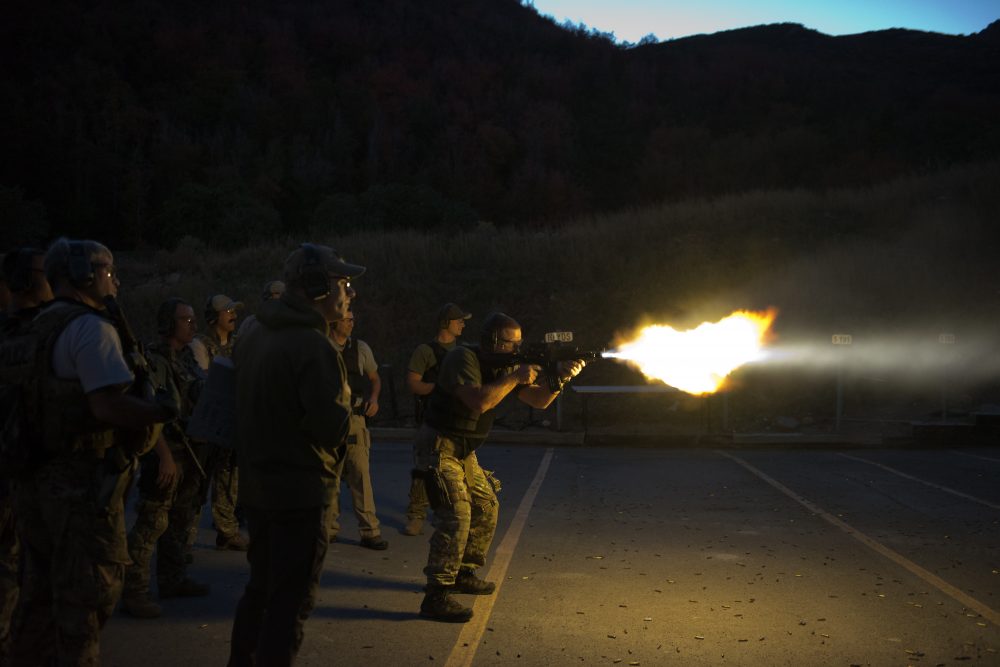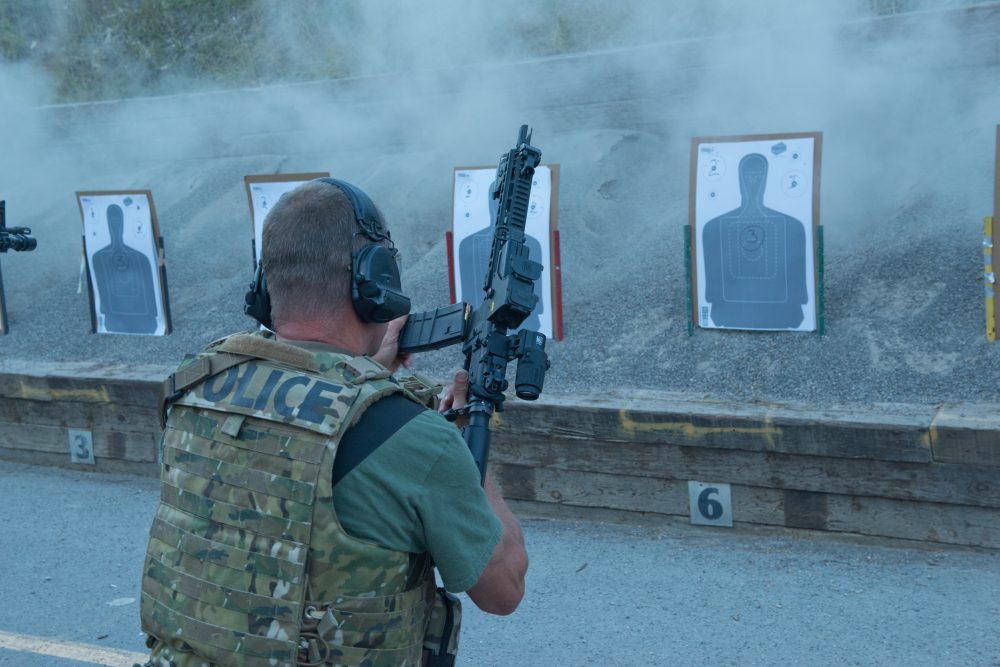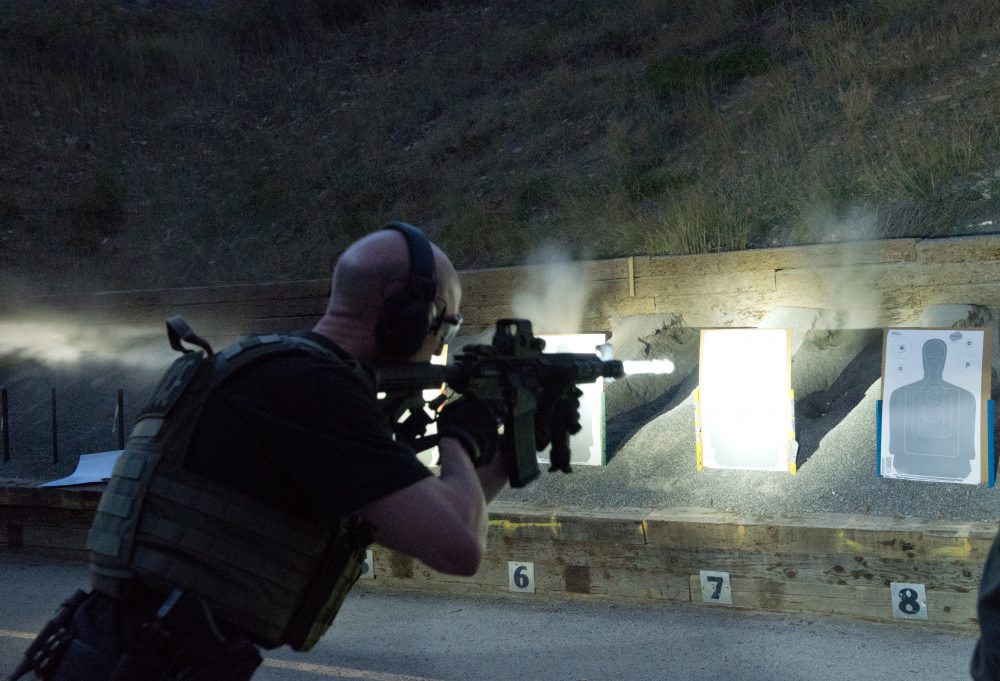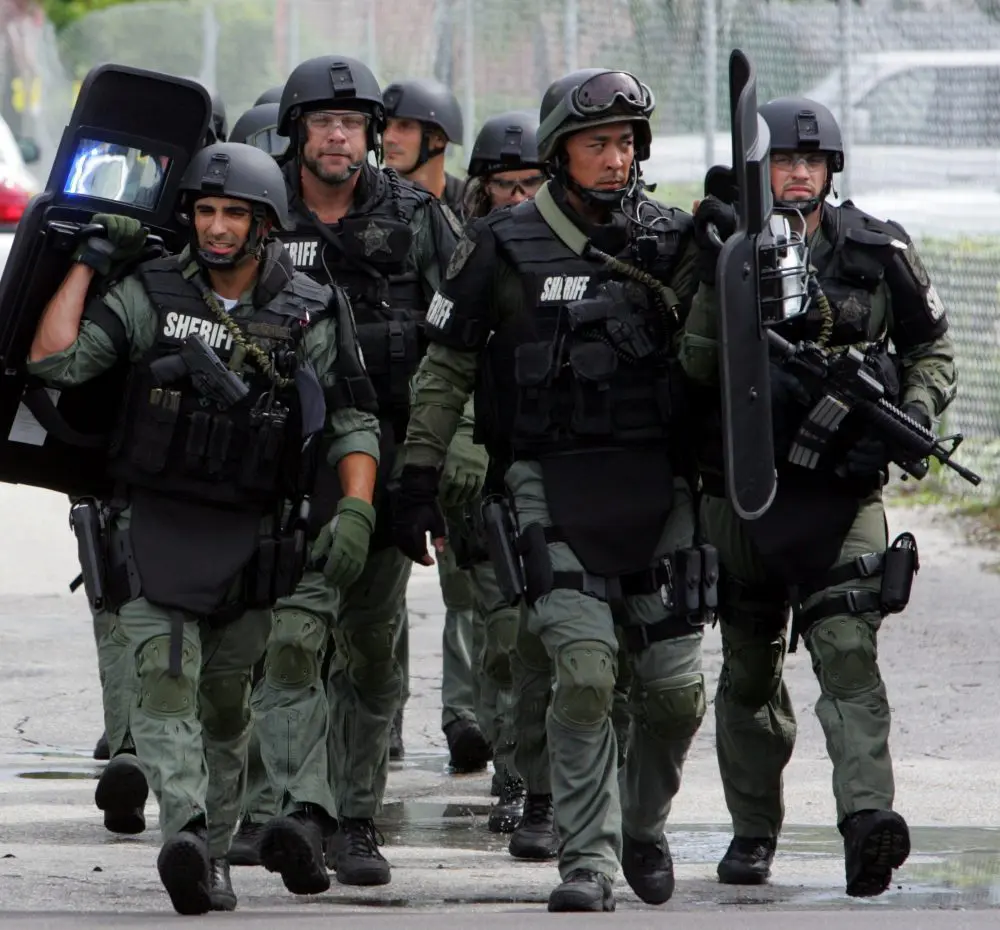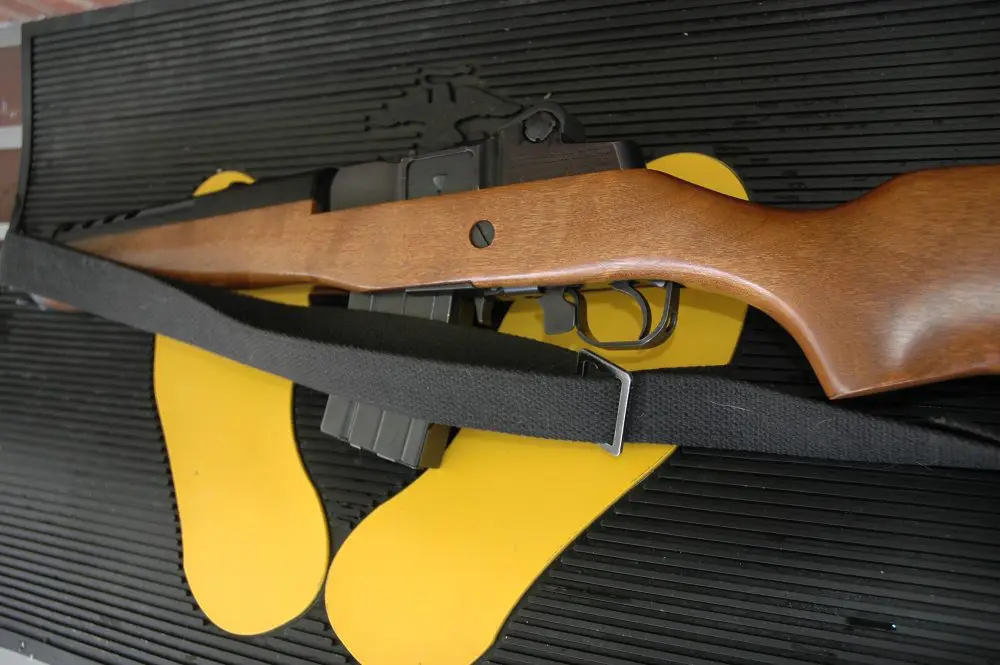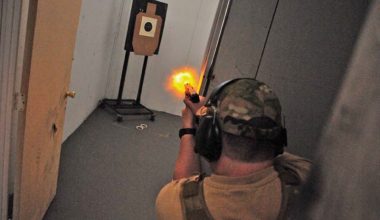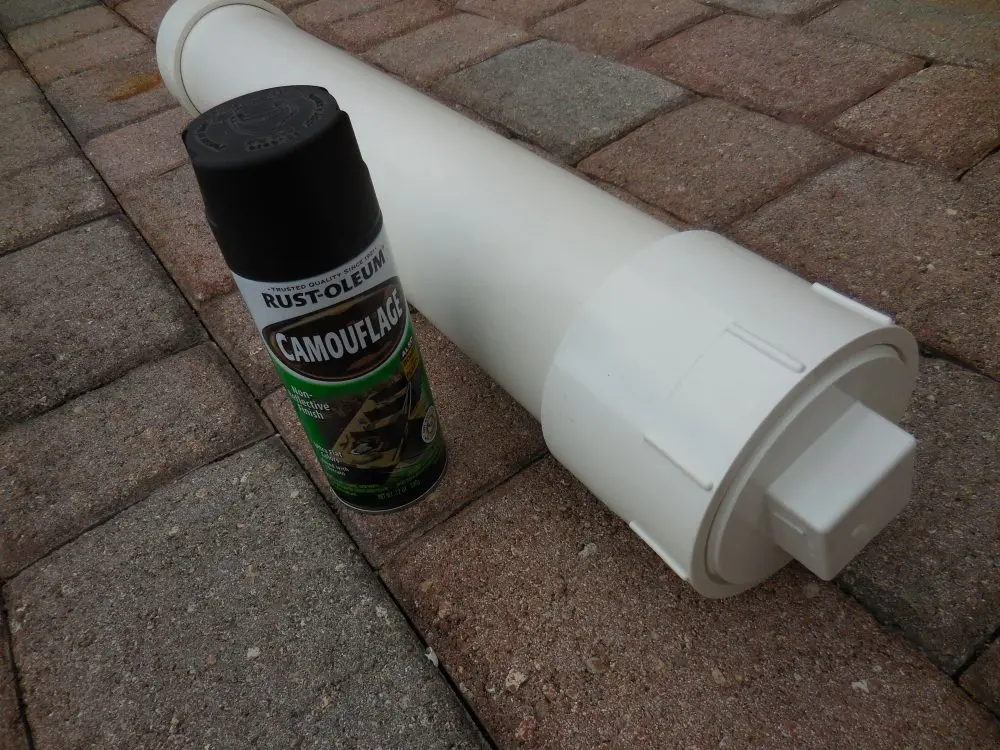Indexing the rifle is fast and accurate at close range.
I first met Wes Doss a few years ago when we were both traveling to the United Arab Emirates as guests of Caracal. The long trip to Abu Dhabi to test Caracal’s precision rifle and prototype pistols provided ample opportunity for us to get to know each other.
Doss’ law enforcement and military backgrounds are extensive. He has been developing courses and teaching officers for well over 25 years. He has been a competitor and a martial artist, with a broad range of skills as a practitioner, trainer, and teacher. Add to that his PhD in Performance Psychology, and the resume just does not get any better.
But I read people, not paper. Conclusions as to character are based on who they are, not their PR packet. After three decades of dealing with “experts” in the police world, I’ve found that, more often than not, the man does not match the myth. Thankfully that was not the case with Wes.
His character was immediately evident. Honest and forthright, his experience and understanding of real-world police operations are clear. As we discussed training philosophies, tactics, and techniques, I found we had much in common. The inevitable low-light conversation arose, along with mention of an idea he had for what would become Lights, Sights & Lasers.
Bahde used an Arsenal AK-74 with Aimpoint T2.
Table of Contents
LIGHTS, SIGHTS & LASERS
Lights, Sights & Lasers started as a collaboration between XS Sights and Wes and his wife Hye Chong Doss in late 2012. Recognizing the limitations to police training—especially low-light instruction—they wanted their program to be free, and wanted to present it all around the country. The lofty goal was to condense roughly 40 hours of training into a single day program.
The concept is bringing consistent cutting-edge training not only to officers everywhere, but law enforcement trainers as well. In 2013, they trained over 1,500 officers in 236 different jurisdictions. Year two was just as successful, reaching more officers and even more venues.
Wes and Hye Chong went about gathering more sponsors and facilitating more venues. They now manage the entire process and have almost 20 well-known companies as sponsors.
Last year was a banner year, with more agencies and sponsors looking to join for 2016. It results in proven techniques and viable tactics being taught nationwide to any officer willing to take a day and bring their weapons and ammunition. It’s truly a new way to tackle training, and has been tremendously successful.
Last year in Salt Lake City, I jumped at the chance to take this training for the second time. My first time through Wes’s curriculum had been in Washington in 2014.
Much of the training is spent dispelling myths and bringing a bit of reality to how we function in low light, how often officers fight in it, and how best to deal with it. Void of the mind-numbing scientific lectures inserted by lawyers, Lights, Sights & Lasers (LSL) is practical, purposeful and immediately applicable.
Colorado Shooting Sports Lightning Bolt made AK reloads fast and precise, allowing author to keep up with the ARs.
LIGHTS, LUMENS, AND VISION
Lumens make for great comparisons of lights. But just because the number is high does not mean it is usable. Candlepower can be instructive in comparing light conditions, not just the brightness. Both are useful, but candlepower makes it easier for me to compare conditions. One striking statistic was that most low-light shootings occur at .25 candlepower, meaning ¼ of the power emanated by one candle. Yet officers are expected to see a threat, identify it, and engage it, shooting accurately—in many cases with a substandard, barely functional, or no light.
Vision considered “perfect” is generally measured at 20/20. That measures clarity and acuity—your ability to define detail. Normal vision (20/20) means the line you see has the clarity of a normal person at 20 feet. If your vision is 20/40, you have the same clarity as a normal person at 40 feet.
Best possible starlight yields 20/180 vision. What you would see at 20 feet has the clarity and acuity of a normal person at 180 feet (60 yards). Low-light shootings occur at as little as 20/300, meaning you are legally blind at 20 feet. With no light—and no training on how to use it—you are identifying, aiming and shooting at a threat as if you were legally blind and 100 yards away. Bottom line: you need a light and you need to know how to use it. With 80% of shootings occurring in low light, most officers are shooting almost literally blind.
AK-74 in a sea of short-barreled ARs.
TIME, TIME, AND LESS TIME
The next relevant statistics are the distance and time involved. The average fight is completed in +/- 2.5 seconds. Some are longer, but most are over very quickly. Adding to the stress, they generally occur within ten feet.
Does that mean all training should be close? Of course not. But coupled with low-light conditions, you have no time, you are reactive, shooting blind, and probably not going to spend much time aiming. Your training must deal with how you react—not from a ready or fighting position on some range.
Practice from a natural position, getting on target quickly and accurately. Unless you spend your shift walking around like a ninja, you will never fight that way. Practice from relaxed and natural positions. Practice, practice, practice, to the point that needed skill sets become automatic. Use various methods, recognizing the fight is what you get, not what you want.
Your flash may overpower your light at night—make sure to check.
ON THE RANGE
Lights, Sights & Lasers is a one-day class that is usually offered two consecutive days at the same venue, allowing as many officers as possible to attend. Because I would be writing about the course for S.W.A.T., I was permitted to attend both days. Using different weapons each day let me try different systems. Most of the emphasis in the Washington class had been pistol. The rifle was the primary weapon in the Salt Lake City classes.
I used my Seekins Precision .300 BLK SBR with Gemtech GMT-300BLK Titanium suppressor on day one. My HK VP9 was carried in a thigh rig nestled in a Safariland ALS holster using a SureFire X300 WML (Weapon Mounted Light). It used a Trijicon MRO RDS and Daniel Defense fixed front sight. Day two I used an Arsenal AK-74 with Aimpoint T2 and fixed sights.
Wes starts with the student’s rifle hanging from the sling, hands in the air. He wants you out of a normal position, with your hands off the rifle. When the whistle blows, you access the rifle and put two rounds into a six-inch circle at seven yards. Red dot sights are off and rear sights folded down (if possible). You are aiming over the sights, indexing the rifle quickly and staying focused on the target. While not unsighted, you are not aligning sights either. It’s about getting on target fast. We moved as far back as 15 yards using the same method.
Reloading AR while keeping the rifle in the workspace.
Once dialed in, the AR was pretty fast, but not as fast as the AK-74. Typical AR sight offset is about 2.5 inches, half that on the AK-74. Indexing the rifle centered in my chest, it became a point, shoot, and dead center hit event. Moving through the drills, we were down to 1.5 seconds from rest to two shots on target. Using the AK found me done and waiting for the 1.5-second whistle with shots clustered inside a couple inches.
Next, three circles with numbers were placed on the target in different spots and engaged in order. Loaded with three rounds, two shots are fired into each circle, requiring a reload. No RDS, only the front sight. Working the AR was fast, the reload equally as quick. Accuracy was solid, but the AK-74 was better.
The reload on the AK was slower, though not as much as you might expect. Equipped with the Colorado Shooting Sports Lightning Bolt, which has charging handles located on both sides of the rifle, I did not miss the bolt locking to the rear. Hooking the magazine in place, I was as fast or faster than some. There is no need to turn the rifle over or reach around to charge it. Our last daylight drill was the same with a pistol transition, adding some complexity and providing the opportunity to work out issues with slings and gear.
Quality weaponlight is a must on a fighting carbine.
The last course for the night was a modified “El Pres” in low light. Starting from rest and facing up range, you turn and engage three targets with two rounds, reload and repeat. Wes wants you to work the light, so you must turn it off during the reload. The light should only be on when you are on target.
Misses added time, extra rounds or failing to manipulate the light resulted in a DQ, with heckling mandatory. The winner gets a prize package worth a couple grand, so every effort was made to win.
You get a good idea of how well your flash hider works (or doesn’t). Most of the SWAT rifles had short barrels, which made them flame throwers. It may not mess with you, but it might mess with your teammate. They also throw out debris and excess powder and are loud. Some flashes overpowered the lights—another consideration. Longer barrels were better, and the AK-74 was similar. The Seekins .300 BLK had no flash to speak of.
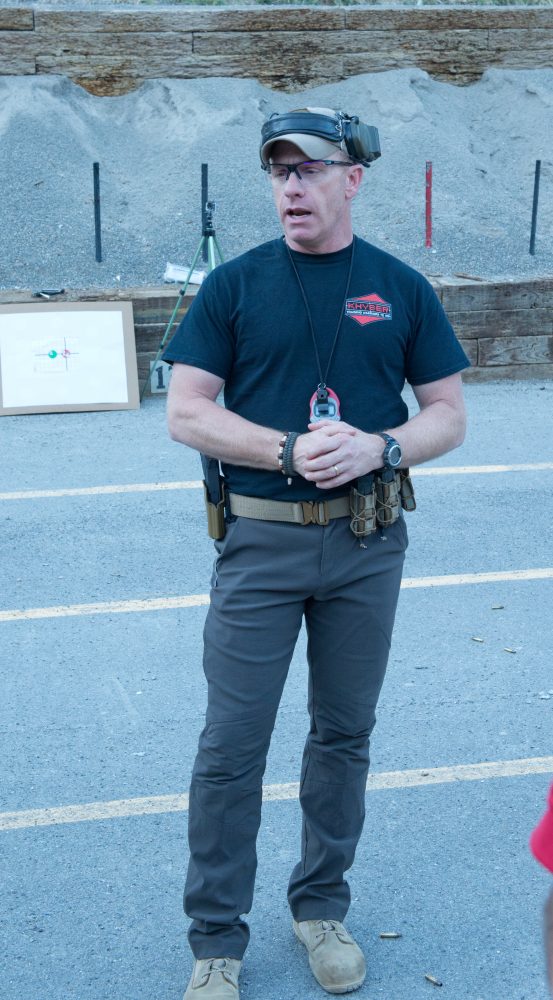
FINAL THOUGHTS
You can only do so much in one day, and Wes packs a ton of useful information into this class. Half the day is classroom, the rest on the range, depending on factors like weather and range issues.
Once the shooting starts, it goes fast and furious. All range training mates to the curriculum and complements the tactics and philosophy. It is practical, useful, and provides officers and trainers a different perspective, one they can pass on to their departments.
This is not a beginner’s class. Officers need to have qualified on their rifles prior to attending. No time is spent getting people spun up, so you need to know how to handle your rifle and maintain safety on the range. You start out fast and move faster, so make sure this is not day one for you and your carbine.
The class featured more and different information this second time around for me, so I recommend taking it more than once. I will be in San Antonio when the LSL Tour returns, and plan to attend it again.
Officers often complain about not being able to attend training. There is no excuse here. Not only is it free, but you leave with a bag of nice swag and the chance to win a prize package worth a couple grand—all donated by some fantastic sponsors.
If the LSL Tour makes it to your area, jump on it. You will leave a better shooter than when you came, and learn a ton. Sign up is as easy as logging on to the LSL Tour website, filling in some info, and hitting enter.
Take the time. You won’t regret it, and it just might save your life!
SOURCES
LSL TOUR
(877) 884-0909
www.lslustour.com
COLORADO SHOOTING SPORTS
(970) 395-0664
www.coloradoshootingsportsstore.com
